Northern cardinals (Cardinalis cardinalis) are common backyard birds that we often take for granted though their family life is interesting.
Bob Kroeger photographed cardinals nesting in his Cape Cod backyard in May and June. The slideshow lets us pause and see what they’re doing.
The male is very bright red: This is good news for the family. Studies have shown that males with bright red breasts and females with bright underwings show more parental care to their young.
He feeds his mate at the birdbath: The male’s job is to feed his mate from nest building through brooding (and perhaps beyond). This makes sense because male cardinals don’t have brood patches. The females build the nest, incubate the eggs and brood the young.
She’s eating away from the nest: It’s perfectly normal for the female to spend time away from the nest, even if there are eggs in it. During incubation, which lasts 11-13 days, the female spends 30% of daylight hours away from the nest.
Two juveniles on a branch with their father: This cardinal couple beat the odds. The majority of nests fail due to predation.
How to recognize juvenile cardinals: The juveniles resemble their mother but their beaks are dark. (Adults have orange-red beaks.) The juveniles’ beaks will turn orange-red when they are 65-80 days old.
You can’t see the food in the father’s beak: The parents feed insects to their young but they carry the food far back in their large beaks. Researchers probably find this frustrating when they have to identify what the young are eating.
How long will the young depend on their parents? Juvenile cardinals are completely dependent on their parents for about 19 days. Around that time, their mother starts to build her next nest. Dad may feed the youngsters occasionally until they are 25-56 days old.
(photos by Bob Kroeger of South Dennis, MA: photos on Facebook; his business website.)

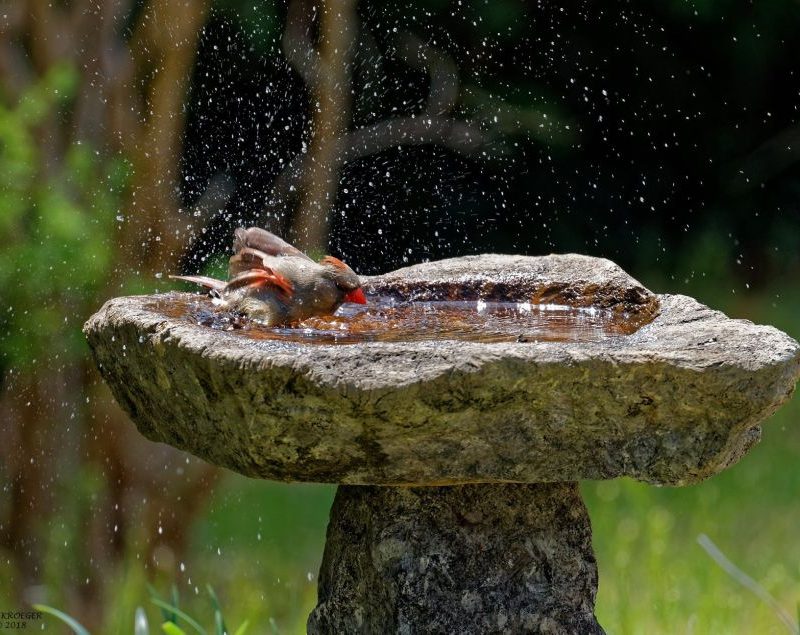
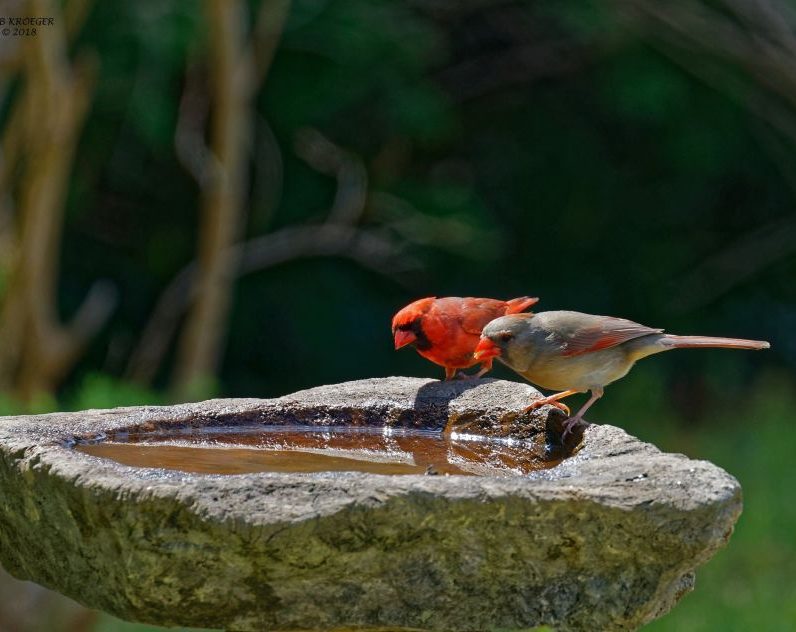
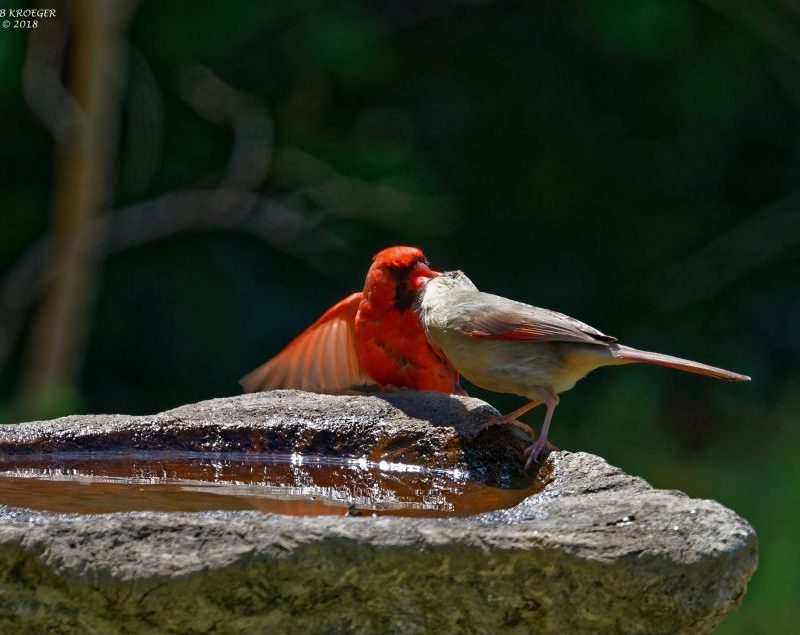
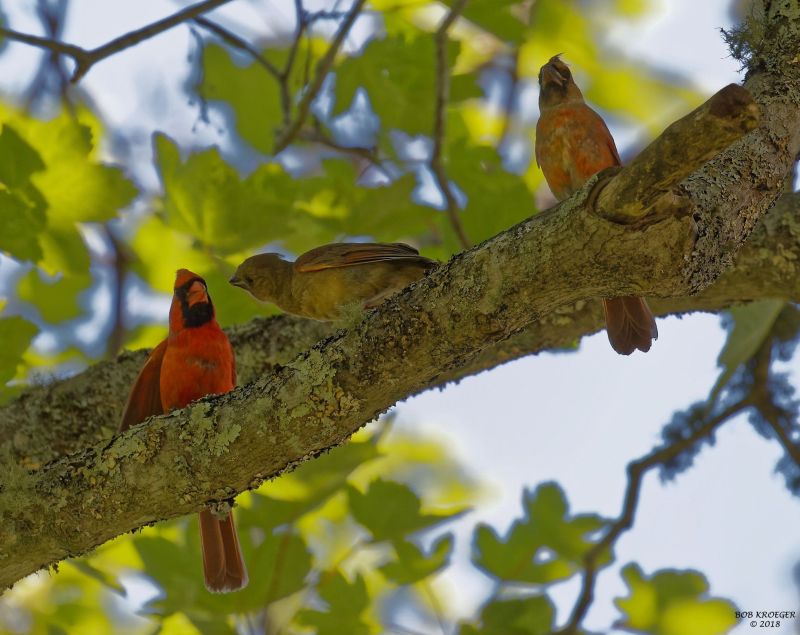
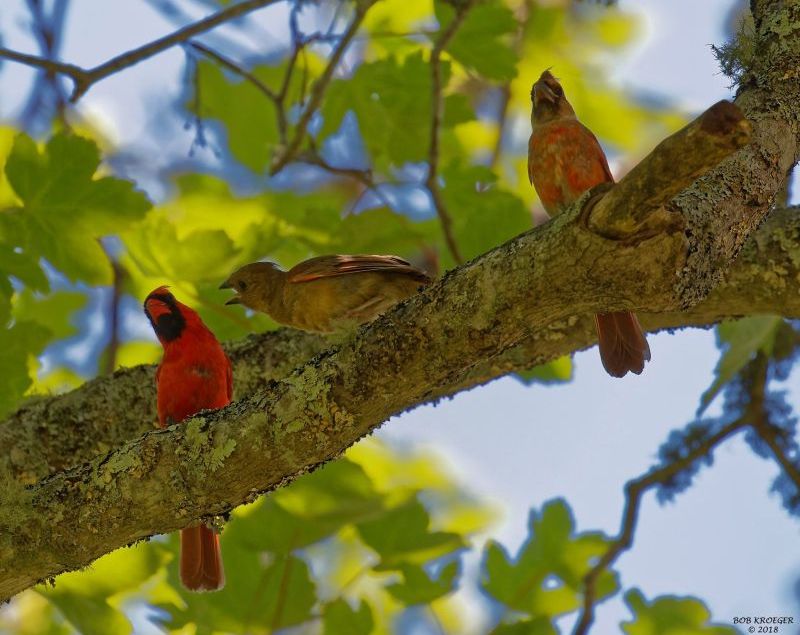
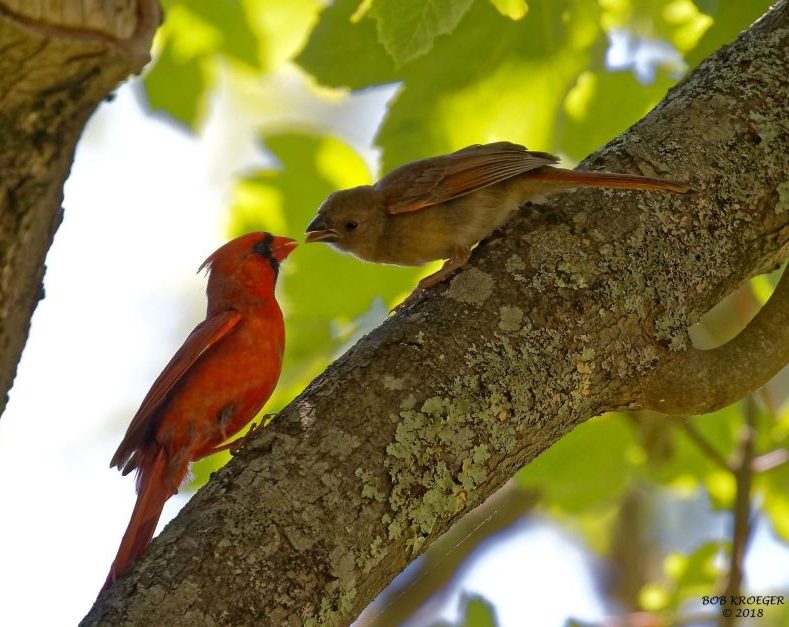
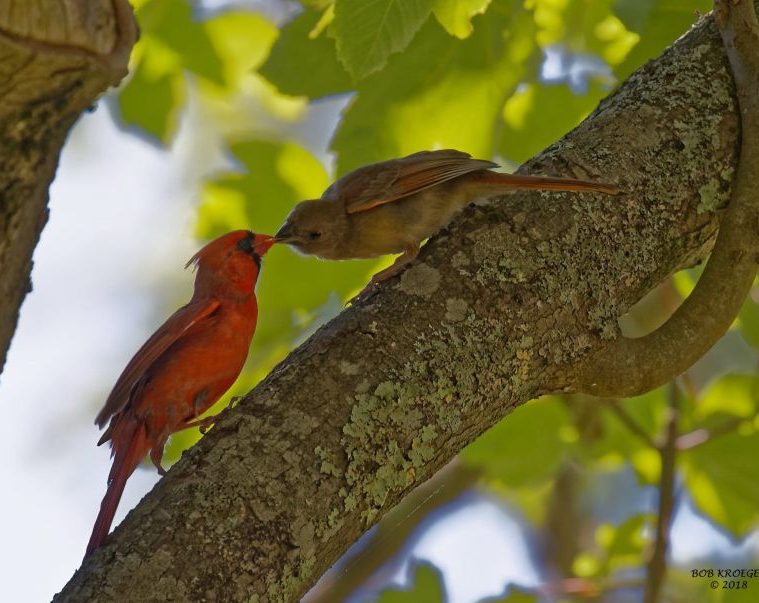
Thank you very much for the insight into the behavior of these beautiful birds. They are a highlight of the backyard birdbath winter and summer.
Beautiful photos!
Love the male and female who travel together to feed on our feeder tray. They must have “dumped” the kids and regained their own life together.
Thanks for posting this info about cardinals! We have a tangle of wild roses right behind our house that I haven’t cleared out yet. It sits in front of a couple of big windows in our living room. We saw a pair of cardinals hopping around in the rose bushes about a month ago and didn’t think anything of it until a nest appeared there about a week later! Not more than a foot from the windows.
The female eventually laid 3 eggs, and I was concerned when she didn’t seem to be on them constantly but now I know that is normal. They all hatched and just left the nest a few days ago. We ended up taping newspaper over the windows after she laid the eggs so that we woudn’t scare her off the nest. I guess the rose bushes are a good location to keep away predators. Maybe they will return to raise their next family.
A regular visitor to my backyard feeder is a female cardinal with an abundance of white feathers. When I noticed a similar bird around ten years ago, a person at Audubon at Beechwood Farms said it’s not all that unusual, it’s called a lucistis (from the Latin for light) phase, and it occurs in several bird species. Maybe the current bird inherited this tendency from the former one.
Today I saw a adult male cardinal feeding a bird a little smaller than him. At first I thought it was a frey catbird. But after seeing the cardinal feed him twice on our patio I wonder if it was a young cardinal.